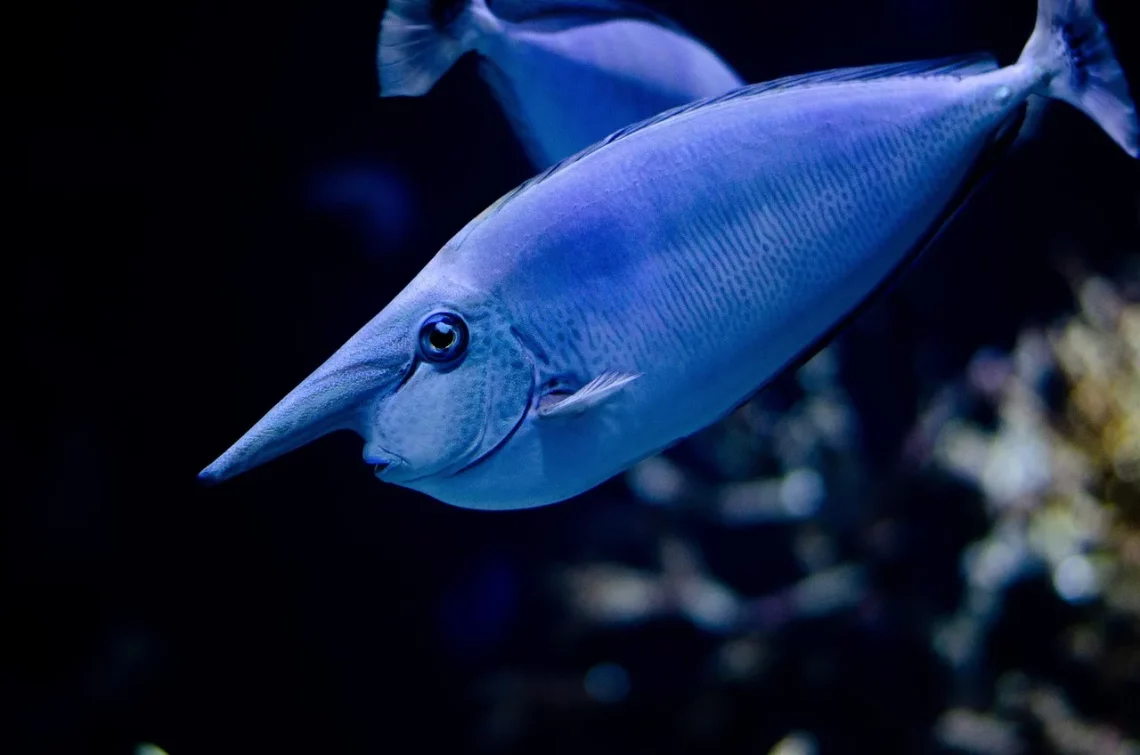
Discovering the Fascinating World of Yellow Rainbow Fish
The underwater realm is a treasure trove of colors, shapes, and fascinating creatures, each contributing to the vibrant tapestry of marine life. Among these, the yellow rainbow fish stands out as a particularly captivating species. With its vivid hues and lively behavior, this fish not only enchants aquarists but also plays a crucial role in its ecosystem. Swimming gracefully through coral reefs and freshwater habitats, the yellow rainbow fish exemplifies the beauty and diversity of aquatic life.
As we delve into the intriguing world of this remarkable fish, it becomes evident that its allure extends beyond mere aesthetics. The yellow rainbow fish is not only a symbol of the vibrant ecosystems it inhabits but also highlights the importance of conservation efforts aimed at preserving these environments. Understanding its habits, habitat, and the delicate balance it maintains within its ecosystem is essential for fostering a greater appreciation for marine biodiversity. This exploration invites enthusiasts and casual observers alike to connect with the enchanting aquatic world, encouraging a sense of responsibility towards protecting these natural wonders for future generations.
Habitat and Distribution of Yellow Rainbow Fish
The yellow rainbow fish, scientifically known as *Melanotaenia erythraea*, is native to the tropical waters of New Guinea and surrounding regions. These freshwater fish thrive in various habitats, including lakes, rivers, and streams. Typically found in slow-moving waters, they prefer areas with plenty of vegetation, which provides both shelter and breeding grounds. The lush aquatic plants not only offer protection from predators but also serve as a source of food.
In addition to their natural habitats, yellow rainbow fish are commonly found in home aquariums, where they have gained popularity due to their striking appearance and relatively easy care requirements. In captivity, they can adapt well to various water conditions, making them an attractive option for both beginner and experienced aquarists. However, it is essential to replicate their natural environment as closely as possible to ensure their health and well-being.
The geographical range of the yellow rainbow fish extends beyond New Guinea, with populations found in parts of Australia and surrounding islands. This wide distribution speaks to their adaptability and resilience, allowing them to thrive in different aquatic ecosystems. However, habitat destruction, pollution, and climate change pose significant threats to their natural populations, highlighting the need for conservation efforts to protect their environments.
Understanding their habitat and distribution is crucial for anyone interested in keeping yellow rainbow fish in an aquarium. By replicating their natural surroundings, aquarists can create a thriving environment that promotes healthy growth and vibrant coloration. This knowledge not only enhances the experience of keeping these fish but also fosters a deeper appreciation for the delicate balance of aquatic ecosystems.
Behavior and Social Structure
Yellow rainbow fish are known for their lively and social behavior, making them a delightful addition to any aquarium. These fish are typically found in schools, which provides them with safety in numbers and promotes a natural social structure. In the wild, they often congregate in groups, swimming together to forage for food and evade predators. This schooling behavior is not only a survival tactic but also an essential aspect of their social interactions.
In an aquarium setting, keeping a group of yellow rainbow fish is highly recommended. Ideally, a school should consist of at least six individuals to ensure they feel secure and exhibit their natural behaviors. When kept in groups, these fish display more vibrant colors and are more active, providing a dynamic visual experience for observers. Additionally, the presence of a well-established school can help reduce stress levels among the fish, contributing to their overall health and longevity.
The social hierarchy within a school of yellow rainbow fish is fascinating. Dominant individuals may establish territories within the group, displaying behaviors such as fin flaring and chasing to assert their rank. However, these interactions are generally non-aggressive and rarely lead to harm, as the fish engage in these displays to maintain social order rather than to fight.
As a species, yellow rainbow fish are also known for their playful nature. They often engage in acrobatic swimming, darting through the water with bursts of energy. This lively behavior not only enhances their appeal as aquarium inhabitants but also serves as an important aspect of their overall health, as physical activity is crucial for maintaining robust fish.
Understanding the behavioral patterns and social structure of yellow rainbow fish is vital for creating an optimal aquarium environment. By replicating their natural schooling conditions and providing ample space for swimming and interaction, aquarists can ensure that these fish thrive and display their full range of colors and behaviors.
Care and Maintenance in Captivity
Caring for yellow rainbow fish in captivity requires attention to their specific needs to ensure they thrive and display their vibrant colors. While these fish are relatively hardy, providing the right environment is crucial. A well-maintained aquarium should include appropriate water conditions, suitable tank mates, and a balanced diet.
First and foremost, water quality is essential for the health of yellow rainbow fish. They prefer slightly acidic to neutral pH levels, typically ranging from 6.5 to 7.5. Regular water changes and the use of a reliable filtration system help maintain optimal water conditions, minimizing harmful toxins and promoting a healthy environment. Temperature is another critical factor; yellow rainbow fish thrive in warmer waters, ideally between 24°C to 28°C (75°F to 82°F).
In terms of tank mates, yellow rainbow fish are generally peaceful and can coexist with various other species. However, it is essential to choose compatible fish that share similar water requirements and temperament. Avoid aggressive or overly territorial species, as these can cause stress to the yellow rainbow fish and disrupt their social dynamics.
Feeding yellow rainbow fish is relatively straightforward, as they are omnivorous and will accept a variety of foods. A balanced diet should include high-quality flake or pellet foods, supplemented with frozen or live foods such as brine shrimp, daphnia, or bloodworms. Offering a diverse diet not only promotes optimal health but also enhances their coloration.
Regular monitoring of the fish’s health is crucial. Observing their behavior, appetite, and physical appearance can help identify any potential issues early on. If any signs of disease or stress are observed, prompt action should be taken to address the problem.
In summary, maintaining a healthy environment for yellow rainbow fish involves attention to water quality, suitable tank mates, and a balanced diet. By ensuring these conditions are met, aquarists can enjoy the beauty and lively behavior of these magnificent fish for years to come.
Conservation and Future Challenges
As captivating as yellow rainbow fish are, they, like many species, face significant challenges due to environmental threats. Habitat destruction, pollution, and climate change are among the pressing issues that affect their populations in the wild. Understanding these challenges is crucial for fostering awareness and promoting conservation efforts.
One of the most significant threats to yellow rainbow fish is habitat loss, primarily due to human activities. Deforestation, agricultural expansion, and urbanization have led to the degradation of freshwater ecosystems. As wetlands and rivers are altered or destroyed, the natural habitats of these fish are compromised, leading to a decline in their populations.
Pollution is another critical concern. Runoff from agricultural fields, industrial waste, and plastic pollution can severely impact water quality, posing risks to the health of aquatic life. Yellow rainbow fish, being sensitive to changes in their environment, can suffer from these pollutants, leading to decreased populations and biodiversity.
Climate change further exacerbates these issues, as rising temperatures and altered precipitation patterns affect freshwater ecosystems. Changes in water temperature can disrupt breeding patterns and the overall health of fish populations. Additionally, increased flooding or drought can lead to habitat loss, making it increasingly difficult for species like the yellow rainbow fish to thrive.
Conservation efforts are essential to protect the habitats and populations of yellow rainbow fish. Initiatives aimed at restoring natural ecosystems, reducing pollution, and promoting sustainable practices can help mitigate some of these challenges. Educating communities about the importance of preserving aquatic environments is also vital in fostering a sense of responsibility towards conservation.
In conclusion, while the yellow rainbow fish remains a vibrant and captivating species, it is crucial to recognize the threats it faces in the wild. Through collective efforts to protect their habitats and promote sustainable practices, we can help ensure the survival of this beautiful fish for future generations.
This article is intended for informational purposes only and should not be considered medical advice. For any health-related concerns, please consult a qualified healthcare professional.




